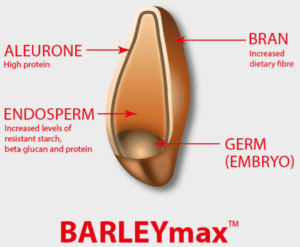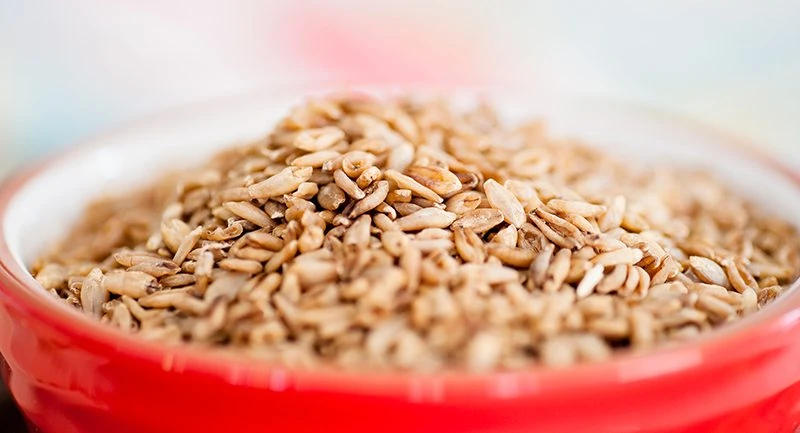Wholegrains. We know that they are tiny but fierce nutritional superheroes that can really pack a punch when it comes to improving our health. In fact, each day there is more and more evidence of the positive impact that wholegrains can have on our heart health, and our digestive health. But what is it that makes a wholegrain ‘whole’?
There are four parts to a grain that essentially make it ‘whole’. These are:

- The germ (also known as the embryo): the reproductive element of the grain that germinates to grow into a plant.
- The endosperm: the tissue inside a wholegrain that provides the grain nutrition to grow.
- The aleurone layer: the inner layer of the wholegrain, surrounding the endosperm. This layer accumulates proteins and lipids that help support grain development.
- The bran layer: the hard, outer layers of the wholegrain. Often found to be a rich source of dietary fibre and essential fatty acids, as well as protein, vitamins and minerals.
When whole grains are processed, quite often some of the nutrients that are found in the various layers of the grain are removed – meaning that you’re not getting the maximum bang for your buck when it comes to improving your health. But unless you’re actually sitting down to a bowl of grains in their natural form each morning, how do you know if you’re choosing a wholegrain?
It’s actually quite simple. By choosing foods that contain wholegrains in as close to their natural form as possible, you’re maximising your exposure to the health benefits grains deliver. There is a myriad of options in the supermarket these days that are clearly labelled as being ‘wholegrain’ or containing wholegrains. It’s also a great idea to check the ingredients panel, which can give you an indication of the percentage of wholegrain included within the product. The Grains and Legumes Nutrition Council suggest that looking for words such as ‘whole’, ‘whole meal’, ‘mixed grain’, ‘cracked’, ‘flaked’, ‘’steel cut whole graind’ or ‘puffed’ next to the name of the grain on the ingredients panel will help keep you on the right path.

So, you’re doing your best to try and include as many wholegrains as you can in your diet – great work! But what are the health benefits that you can expect to see with your increased consumption of wholegrain?
- Can improve your heart health – wholegrains are widely recognised to improve cardiovascular wellbeing through its ability to lower blood glucose and cholesterol levels
- Can reduce your risk of diabetes – wholegrains are known to lower post-prandial glucose and improve insulin sensitivity.
- Can reduce your risk of obesity – wholegrains contain more fibre than their refined counterparts, helping to keep you fuller for longer.
Want some simple wholegrain swaps that you can implement for your family? Look no further.
If you have a wholegrain swap suggestion that you can share with us, please drop us a line!
Intended as general advice only. Consult your health care professional to discuss any specific concerns.




